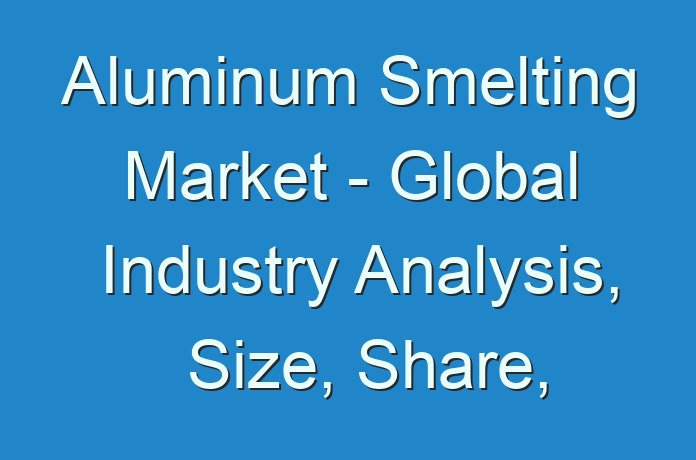
Aluminum Smelting Market: Overview
Aluminum smelting is the process of extracting aluminum from alumina. The Hall-Héroult process is a commonly used for the production of primary aluminum. The factories or production facilities that extract aluminum are called smelters. The Hall-Héroult process is an electrolytic process that uses considerable amount of electricity. Hence, smelters are generally located close to large power plants to ensure sufficient supply of electricity. Many countries importers of aluminum hence, smelteries are located close to ports to save transportation costs.
Aluminum Smelting Market: Drivers & Restraints
Aluminum is used in a wide range of products ranging from beer cans to mobile phones, to railing, enclosures, fence, and gates, to name just a few. Other products manufactured from aluminum include sheets, plates, bars, tubes, coils, and strips. Demand for aluminum has created a big market for it in all regions across the globe. Hence, aluminum smelters are also spread across all regions. On the other hand, a major drawback associated with the aluminum smelting process is the significant amount of greenhouse gas emissions. Governments of various countries have imposed strict regulations on the emission levels of these smelters. This has slowed down the expansion of the global aluminum smelting market.
Companies have been trying to reduce emissions of the aluminum production process for a long time, but with limited success. In May 2018, Alcoa Corporation and Rio Tinto announced a revolutionary process that produces oxygen instead of carbon during aluminum production and eliminates all direct greenhouse gas emissions from the traditional smelting process. This new process is expected to be sold as a technology package from 2024. This development is considered to be a significant development in the aluminum industry in more than a century.
Aluminum Smelting Market: Trends & Development
Another important development that has taken place in the aluminum industry is the shift of aluminum smelting from other parts of the world to China. Currently, China has an aluminum smelting capacity of more than 40 million tons, and new capacities are likely to be added. It accounts for nearly half of the world’s annual primary aluminum production. In the U.S, operational aluminum smelters have dropped from 23 in the early 1990s to only five as of now.
Request PDF brochure:
https://www.transparencymarketresearch.com/sample/sample.php?flag=B&rep_id=50229
Aluminum is used in a wide range of end-user industries such as construction, transportation, power generation, electronic products, and packaging. Other industries, such as consumer goods, also use aluminum. The use of aluminum by these industries is expected to increase during the forecast period. This, in turn, is projected to drive the global aluminum smelting market in the near future.
Aluminum Smelting Market: Regional Outlook
In terms of region, the global aluminum smelting market can be segmented into North America, Latin America, Europe, Asia Pacific, and Middle East & Africa. The cost of electricity plays an important role while establishing an global aluminum smelting market in a country. For example, the kilowatt hours per ton for aluminum production is different in every region and country; it is the lowest in China.
Request enquiry before buying:
https://www.transparencymarketresearch.com/sample/sample.php?flag=EB&rep_id=50229
Aluminum Smelting Market: Key Players
Some key players operating in the global aluminum smelting market include Alcoa, China Hongqiao Group, Century Aluminum, Aluminum Corporation of China Limited (CHALCO), and Pacific Aluminum.
Request for custom research:
https://www.transparencymarketresearch.com/sample/sample.php?flag=CR&rep_id=50229





